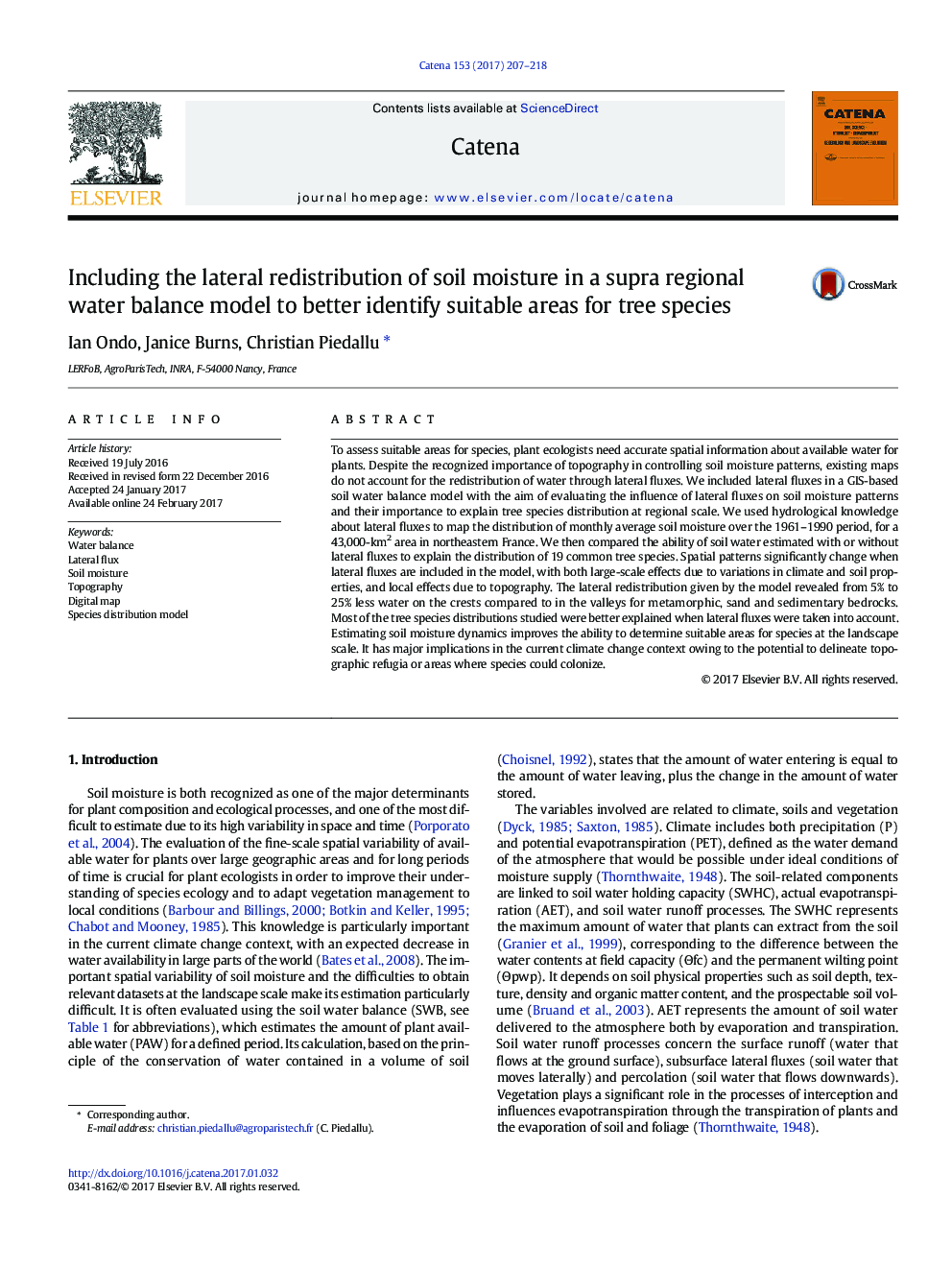| Article ID | Journal | Published Year | Pages | File Type |
|---|---|---|---|---|
| 5770163 | CATENA | 2017 | 12 Pages |
â¢Contribution of lateral redistribution of water was included in soil moisture maps.â¢Lateral runoff leads to 5 to 25% less water available for plants on the crests compared to the valleys.â¢Tree species distribution was better explained when taking lateral fluxes into account.
To assess suitable areas for species, plant ecologists need accurate spatial information about available water for plants. Despite the recognized importance of topography in controlling soil moisture patterns, existing maps do not account for the redistribution of water through lateral fluxes. We included lateral fluxes in a GIS-based soil water balance model with the aim of evaluating the influence of lateral fluxes on soil moisture patterns and their importance to explain tree species distribution at regional scale. We used hydrological knowledge about lateral fluxes to map the distribution of monthly average soil moisture over the 1961-1990 period, for a 43,000-km2 area in northeastern France. We then compared the ability of soil water estimated with or without lateral fluxes to explain the distribution of 19 common tree species. Spatial patterns significantly change when lateral fluxes are included in the model, with both large-scale effects due to variations in climate and soil properties, and local effects due to topography. The lateral redistribution given by the model revealed from 5% to 25% less water on the crests compared to in the valleys for metamorphic, sand and sedimentary bedrocks. Most of the tree species distributions studied were better explained when lateral fluxes were taken into account. Estimating soil moisture dynamics improves the ability to determine suitable areas for species at the landscape scale. It has major implications in the current climate change context owing to the potential to delineate topographic refugia or areas where species could colonize.
